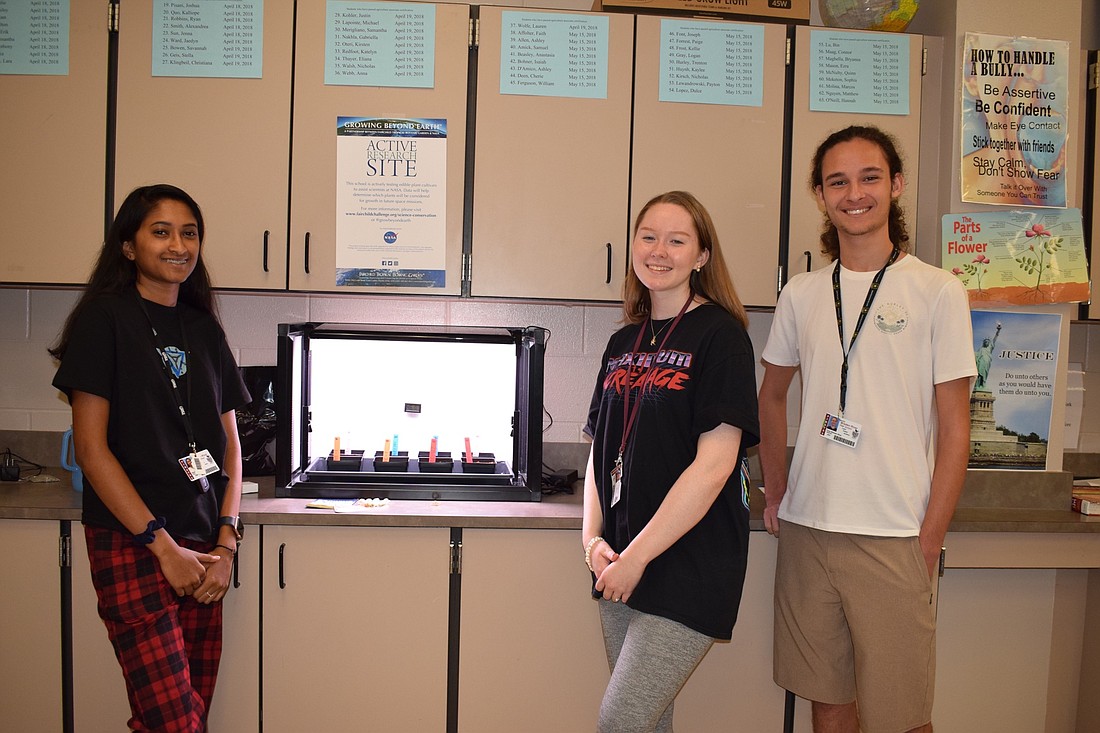- May 3, 2025
-
-
Loading

Loading

Braden River High School senior Raisa Matin never thought she would be doing research for NASA, but now she’s researching plants that could eventually be grown at the International Space Station.
“I thought it was pretty cool that we’re able to work with such a big organization like NASA and that our project and our data could potentially be used in space,” Matin said.
Braden River High School is among dozens of schools across the country testing factors that could influence plant growth, taste and nutrition for NASA and the Fairchild Tropical Botanic Garden as part of the Growing Beyond Earth program.
“It’s a great experience for the students,” said Jonathan Heavner, an agriculture and horticulture teacher at Braden River. “They get to learn real-life scientific skills. They get to ask real questions that will have an impact on what ends up going on long-term space missions.”
Students must explicily follow instructions NASA provided in planting romaine lettuce and three random varieties of leafy greens under an LED light to see how large and quickly they grow as well as their compactness, resilience and taste.
Every day, students will measure the plants and record data that at the end of the week will be sent to NASA. The students will then receive feedback weekly from NASA scientists and plant scientists at Fairchild Tropical Botanic Garden.
If NASA finds a particular species is growing well, it will field test it at the Kennedy Space Center. If the plant is successful at the center, it’ll make its way onto the International Space Station.
Senior Megan Roberts said participating in the program is going to take the students being responsible in how they care for the plants.
“We have to really make sure we follow directions to the ‘T’ as far as how deep we plant the plants, how much water, how much fertilizer and the amount of time the plants are under light,” she said.
Knowing that the research in the classroom is helping NASA makes the hard work and dedication to the project all worth it, Matin said.
Heavner said Braden River’s participation in the program came out of luck; he found out about it during a visit at the botanical gardens during winter break where he met Amy Padolf, the botanic garden’s director of education. Padolf insisted Heavner apply for the program.
Heavner filled out the application in July and completed online trainings and quizzes, and the school was notified of its approval in September.
“I feel very blessed that we are able to do this because it’s real-world experience for the kids, and it’s going to get them excited about research and science,” Heavner said.
The program provided the growth chamber, which is made as close as possible in terms of size and materials as the one on the International Space Station.
Later this month, students will begin a second trial, where they get to change a variable in the testing to see how the plants react. They’ll then create a research poster to present to NASA scientists.